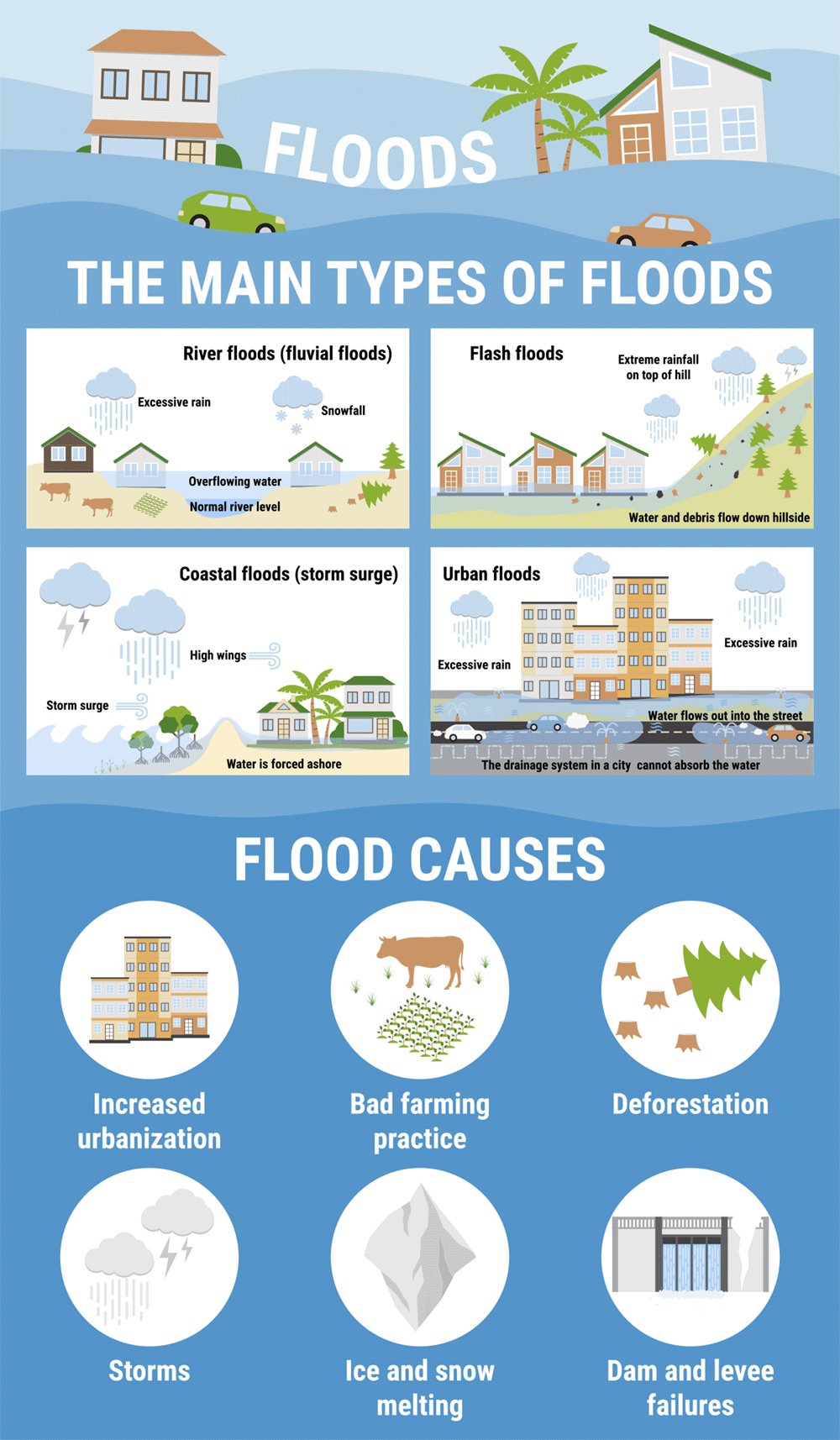
Flood Plans and Storm Preparedness
Emergency Flood Plan Worksheet
How to Prepare For a Flood
Preparing in advance for a flood is crucial in saving valuable property and resources. With the increase in extreme weather patterns and rising sea levels, it is more crucial than ever to be prepared for potential floods.
Not only can flooding cause significant damage to homes and businesses, but it can also pose a serious threat to personal safety.
By taking proactive measures to prepare for flooding, individuals and organizations can minimize damage, protect their assets, and ensure the safety of themselves and others.
Garrison Flood Control is here to assist you in your flood planning needs. Contact Us today!
Download Our Emergency
Response Plan Today!
Types of Floods
There are several types of floods that can occur, each with their own unique characteristics and causes. Some of the most common types of floods include flash floods, river floods, coastal floods, and inland flooding. It's important to understand the different types of floods and their potential impact in order to effectively prepare and protect yourself and your property.
River Floods
Occurs when water levels rise over the top of river banks due to excessive rain from:
Tropical systems making landfall
Persistent thunderstorms over the same area for extended periods of time
Combined rainfall and snowmelt
Ice jam
Coastal Floods
Inundation of land areas along the coast is caused by higher than average high tide and worsened by heavy rainfall and onshore winds.
Storm Surge
Abnormal rise in water level in coastal areas, over and above the regular astronomical tide, caused by forces generated from a severe storm's wind, waves, and low atmospheric pressure.
Inland Flooding
Occurs when moderate precipitation accumulates over several days, intense precipitation falls over a short period, or a river overflows because of an ice or debris jam or dam or levee failure.
Flash Floods
Caused by heavy or excessive rainfall in a short period of time, generally less than six hours and are usually characterized by raging torrents after heavy rains that rip through river beds, urban streets, or mountain canyons.
Seasonal Flooding Patterns:
When to Expect Floods in Different U.S. Regions
Flooding is a common natural disaster in the U.S., affecting millions of people every year.
The timing and frequency of floods can vary depending on the region and the weather patterns.
North East
In the Northeast region of the United States, flooding events typically occur during the spring and summer months. This is because of a combination of factors such as snowmelt, heavy rainfall, and thunderstorms. Winter snowfall can accumulate and be stored in mountainous areas until the spring thaw, causing rivers and streams to swell and potentially overflow. Heavy rainfalls, which are common during the summer months, can also cause flash floods and river floods.
South
The Southern region of the United States typically experiences flooding events throughout the year, but the frequency and severity of these events can vary depending on the season. The region is particularly vulnerable to tropical storms and hurricanes, which can cause storm surges and coastal flooding, especially during the Atlantic hurricane season from June to November. In addition, the region is prone to flash floods, especially during the summer months, when heavy rainfall and thunderstorms are common. Flash floods can be particularly dangerous as they can occur rapidly and with little warning.
Midwest
The Midwest region of the United States typically experiences flooding events during the spring and summer months, when snowmelt and heavy rainfall can cause rivers and streams to overflow. Winter snowfall can accumulate in the upper Midwest and the Rocky Mountains, and as the temperatures rise in the spring, the snow melts and flows into the rivers, increasing the water levels. In addition, heavy rainfall and thunderstorms, which are common during the summer months, can also contribute to river and flash floods.
West
The West Coast of the United States typically experiences flooding events during the winter months, such as river and flash floods, as well as landslides and mudslides in areas with steep terrain. Coastal flooding can also occur during this time, especially during high tides and storm surges. During the summer months certain parts of the west experience Monsoon season, which lasts from June to November producing heavy rainfall, which can cause floods, landslides, and other weather-related hazards.

Protect Your Property
Flood Barriers for Homes
Home flood protection products can provide peace of mind for homeowners who live in flood-prone areas.
These products can range from simple devices such as sandbags and flood barriers for homes to more advanced systems such as full perimeter protection systems.
With the right home flood protection products in place, homeowners can minimize the risk of flood damage to their property and belongings, and ensure their safety during times of flooding.
Flood Barriers for Businesses
As a business, it is crucial to have flood protection on hand to protect your property, inventory, and employees in the event of a flood. Floods can cause significant damage to buildings, equipment, and merchandise, resulting in financial losses that can be devastating for a business.
In addition, floods can pose a serious safety risk to employees and customers, especially if they occur during business hours. By having flood protection measures in place, such as sandbags, flood barriers, and emergency response plans, business owners can minimize the impact of floods on their operations and ensure the safety of everyone involved. It is essential to be prepared for potential flooding events, as they can occur unexpectedly and with little warning, and can have a significant impact on the long-term success of a business.
Download an Emergency Response Plan Today
Garrison Flood Control is here to assist you in your flood planning needs.
Implement Standard Operating Procedures for your facility
Keep a list of key personnel responsible for implementing your plan
List core vendors and products needed
Conduct annual reviews to ensure proper execution and be Flood Ready!



























